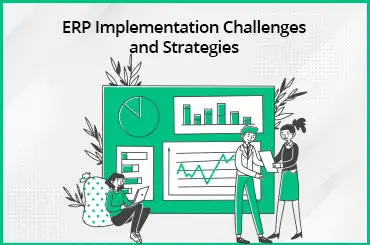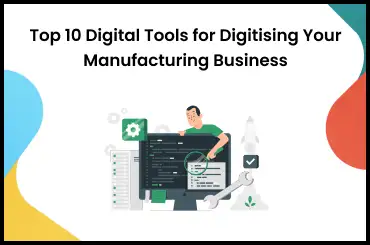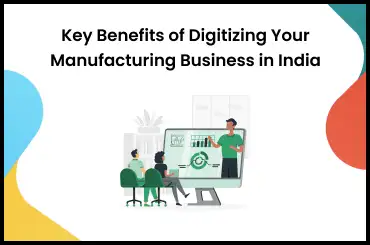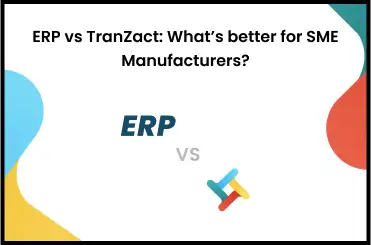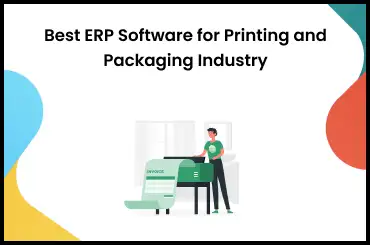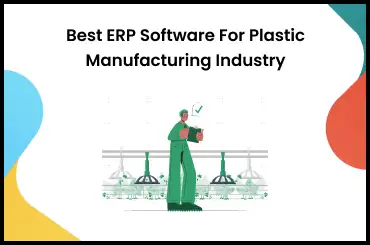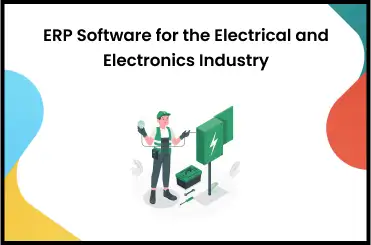In today's highly competitive business environment, the success of ERP implementation can serve as a crucial differentiator for organizations seeking to optimize operations and achieve sustainable growth. This in-depth blog post examines the critical aspects of implementing an ERP system, offering valuable insights on developing a strategic ERP implementation plan that aligns with your organization's goals.
The key subjects addressed in this post include:
- Planning for ERP Implementation
- Selecting the Appropriate ERP Software
- Data Migration
- Customization and Configuration
- User Acceptance Testing
- Change Management, and
- Post-Implementation Support
Furthermore, we will discuss prevalent ERP Implementation methods, challenges and risks and mitigations, best practices, and timeline expectations, ultimately highlighting the integral connection between ERP and Business Growth. When executed effectively, ERP implementation leads to increased productivity, improved efficiency, reduced risk, technological relevance, and a competitive advantage for modern businesses.
What is ERP and Why is it Important for SMEs?
Rapid digital transformation and globalization have made businesses more competitive than ever, and Small and Medium Enterprises (SMEs) in India are no exception. To thrive in this challenging environment, SMEs need to embrace innovative technologies that can streamline their processes, improve efficiency, and drive growth. Enterprise Resource Planning (ERP) is a comprehensive software solution that integrates all the essential functions of a business, such as finance, human resources, procurement, inventory management, customer relations, and more. By centralizing data and automating processes, ERP systems enable SMEs to make informed decisions, reduce operational costs, and enhance overall productivity.
ERP implementation in SMEs can lead to numerous benefits, including:
Improved efficiency
By automating repetitive tasks and streamlining processes, ERP systems significantly reduce manual work, thereby allowing employees to focus on more value-added activities.
Enhanced collaboration
With a centralized database, team members can easily access real-time information, leading to better collaboration and quicker decision-making.
Greater visibility
ERP systems provide a comprehensive view of your entire business operations, which helps in identifying bottlenecks, inefficiencies, and growth opportunities.
Scalability
ERP solutions are designed to grow with your business, making it easy to add new functionalities or integrate with other systems as your organization expands.
Better compliance
ERP systems help SMEs comply with local and international regulations by automating the necessary reporting processes and maintaining accurate records.
While the transition from distributed databases to a centralized system may initially seem complex, the benefits of ERP implementation ultimately outweigh the intricacies of the process.
Guide for ERP Implementation Process
Having comprehended the advantages of ERP implementation, let us examine the essential steps involved in successfully incorporating an ERP system within your SME:
Step 1: Establish Your Goals and Objectives
Prior to initiating the ERP implementation process, it is vital to determine your organization's specific requirements and objectives. Assess elements such as existing pain points, growth strategies, and the preferred degree of automation. Defining your goals explicitly will aid in selecting the appropriate ERP solution and devising a roadmap for successful implementation. A significant decision at this juncture involves determining whether to use a cloud-based or on-premises ERP system and which option is more suitable by understanding the differences between the two and evaluating them against your goals.
Step 2: Form the Ideal Team
Assemble a devoted team consisting of members from diverse departments, including IT, finance, human resources, and operations. This cross-functional team will be accountable for managing the ERP implementation process, ensuring the new system caters to the needs of all stakeholders. Make sure that no stakeholders from any of the steps of the implementation process are missed out.
Step 3: Select the Optimal ERP Software
Investigate and evaluate various ERP software available in the market, taking into account factors such as cost, scalability, customization options, and vendor support. Opt for ERP software that addresses the unique demands of your industry and aligns with your organization's objectives. Here is a blog post that shares details on the best ERP Software available in the market.
Step 4: Create a Comprehensive Implementation Plan
Develop an in-depth implementation plan, delineating the timeline, budget, and resources necessary for each phase of the ERP implementation process. This plan should encompass milestones, potential risks, and contingency strategies to guarantee seamless execution. Acquire a comprehensive understanding of current workflows and develop a design for the new system. This can be achieved with the following steps:
- Involving end-users in the design phase, as they possess the most in-depth understanding of the solutions they seek
- Designing new, more efficient workflows and processes, which may necessitate customization of the ERP software
Step 5: Data Migration and Integration
Transferring your existing data to the new ERP system is a pivotal step in the implementation process. The ERP implementation project team should devise a plan to manage obsolete data, ensuring an efficient transfer of valuable information. This approach prevents wholesale migration of historical data and guarantees that past inefficiencies are not perpetuated. Ensure data accuracy by conducting an extensive data cleansing exercise before migration.
Additionally, integrate the ERP system with your current software solutions to enable uninterrupted data flow and augment overall efficiency.
The information gathered during the planning and design stages serves as the foundation for the development stage. Thoroughly addressing the earlier stages and devoting the necessary time to them will strengthen this phase of the ERP implementation process.
The development stage of ERP implementation involves:
- Configuring and customizing the software to support the redesigned processes
- Developing integration with the organization's existing business applications
Simultaneously, the project team will begin developing training materials for users to adapt to the new system. When the new systems go live, users need to be educated and trained on proper usage and operating procedures.
Step 6: Employee Training
Offer thorough training to your employees to facilitate their understanding and navigation of the new ERP system. This will minimize resistance to change and ensure a smooth transition. Incorporate hands-on training sessions, user manuals, and ongoing support to address any queries or concerns your employees may have.
Step 7: System Testing and Validation
Before launching your ERP system, conduct rigorous testing to identify and rectify any bugs, data inconsistencies, or functional gaps. The testing phase in ERP implementation typically occurs in two stages:
- Stage one: Initial testing takes place concurrently with development, where specific features or functions are tested and adjusted based on the results.
- Stage two: The initial process is usually followed by a more rigorous round of testing of the system's full capabilities by:
- Testing the system for employees' day-to-day activities
- Testing of migrated data
- Providing introductory training for new users and assessing their usage behaviour
The training material created in the development phase holds significant value, as it has been tailored based on user needs and feedback. Utilizing this material can make your ERP implementation much smoother and more efficient. This step is crucial to ensure the system functions as intended and satisfies your organization's requirements.
Step 8: Go Live and Post-Implementation Support
At this stage, the outcome of the efforts invested over the past few months becomes tangible. Your ERP implementation project is well underway, and your new system is ready to go live!
However, the project team's role is not over yet. During the initial rollout, provide round-the-clock support to address any issues that may emerge. They need to be standing by, prepared to:
- Answer any questions
- Assist users in understanding the system and addressing any bugs
- Collaborate with implementation partners to help with troubleshooting
Despite the initial training, the entire ERP implementation process requires patience. It will take time for users to adapt to the new system and for it to achieve the intended productivity gains. Data migration is still an ongoing process at this stage. While some data would have been migrated in advance, other live, current, or transactional data needs to be migrated during the deployment and updated in the new system.
There are three methods of deployment:
- Deploying all the modules of the ERP system concurrently
- Focusing first on specific, high-priority modules, followed by others later, in stages
- Continuing to run older systems parallelly with the new system for a while, to minimize risk
In the post-implementation phase, monitor the system's performance and make necessary adjustments to optimize its effectiveness.
Step 9: Continuous Improvement
With the ERP system deployed, the project team now shifts its focus to:
- Listening attentively to user feedback
- Adjusting the system based on accurate and valid feedback
- Undertaking additional development and configurations as new requirements are added to the system
ERP implementation is an ongoing process that necessitates constant monitoring, evaluation, and enhancement. Regularly assess your ERP system's performance, collect feedback from end-users, and implement updates or improvements to ensure your system remains in sync with your organization's evolving needs. Maintaining open communication channels and providing timely assistance will help facilitate a smooth transition and pave the way for realizing the full potential of the new ERP system
ERP Implementation Challenges
Having explored the crucial steps involved in a successful ERP implementation, it is essential to recognize the challenges that businesses often face during this process. By understanding these obstacles, companies can proactively develop strategies to mitigate risks and ensure a seamless transition. In this section, we will discuss the most common challenges encountered during ERP implementation, such as budget overruns, resistance to change, and the need for continued project management. By addressing these concerns head-on, businesses can not only maximize the benefits of their new ERP system but also promote a culture of adaptability and growth.
Running over budget:
Cost overruns are frequent in ERP implementation projects, often due to overlooked expenses. Underestimating the amount of resources, effort, and time required to transition to a new system is another reason companies exceed their budgets. Additionally, it's crucial to consider the maintenance costs incurred after the ERP implementation begins.
Resistance to change:
ERP implementation can be challenging, as it entails a complete overhaul of the business environment and processes. It necessitates a shift in users' and employees' perceptions since the success of the ERP implementation process depends on their ability to adapt swiftly. Addressing concerns, providing thorough training, and fostering a culture of open communication can help mitigate resistance to change.
Continued project management:
The ERP implementation project team must continuously assess the system, ensure updates are in place, and conduct periodic reviews. The process is an ongoing and evolving journey that doesn't end when the new ERP system is deployed and goes live. Outdated core ERP processes can harm the business, so it's vital to monitor requirements and address issues as they arise. Maintaining engagement and commitment to improvement is essential for long-term success. In addition to the challenges discussed earlier, businesses may also encounter the following obstacles during ERP implementation:
- Inadequate customization
- Insufficient employee training
- Data migration challenges
- Ineffective communication
- Underestimating the complexity
ERP Implementation Risks & Mitigation
While implementing ERP Software, there are some risks involved as well. Below we have listed some of them along with risk mitigation strategies:
Scope creep
Scope creep occurs when the project's requirements and goals expand during the implementation process without proper planning and control. This can lead to increased costs, delays, and an inability to meet the original objectives.
Mitigation plan:
- Clearly define the project scope and objectives from the outset.
- Establish a change control process to evaluate and approve any proposed changes to the project scope.
- Ensure effective communication between stakeholders and the project team to avoid misunderstandings.
Inadequate vendor support
Lack of timely and effective support from the ERP vendor can hinder the successful implementation of the system and create frustration among users.
Mitigation plan:
- Thoroughly evaluate vendors during the selection process, considering their track record, industry expertise, and support offerings.
- Establish clear expectations with the vendor regarding support levels, response times, and escalation procedures.
- Maintain open lines of communication with the vendor throughout the implementation process to address issues promptly.
At TranZact, we understand that ERP Implementation can be an overwhelming process, hence, we ensure a timely delivery followed by continued support.
Low user adoption
Low user adoption can result from resistance to change, insufficient training, or an inadequate understanding of the system's benefits.
Mitigation plan:
- Involve end-users in the planning and design stages to ensure their needs are addressed.
- Provide comprehensive training to users, including hands-on sessions, user manuals, and ongoing support.
- Communicate the benefits of the ERP system to users and demonstrate how it will improve their day-to-day tasks.
Technical issues and system downtime
Technical issues, such as software bugs or hardware failures, can lead to system downtime and disrupt business operations.
Mitigation plan:
- Conduct thorough testing of the system before deployment to identify and resolve potential issues.
- Develop a contingency plan for system downtime, including backup systems and alternative procedures.
- Regularly monitor system performance and address technical issues proactively.
Security breaches and data loss
ERP systems contain sensitive business data, and security breaches or data loss can have severe consequences for an organization.
Mitigation plan:
- Implement robust security measures, including encryption, strong access controls, and regular security audits.
- Conduct regular data backups and establish a disaster recovery plan.
- Train employees on security best practices and promote a culture of security awareness throughout the organization.
TranZact ensures the complete safety of all data entered into our ERP Software.
ERP Implementation Challenges and Risks for SMEs
Small and Medium Enterprises (SMEs) face unique challenges and risks when implementing ERP systems. By understanding these challenges and creating appropriate risk mitigation strategies, SMEs can increase the chances of a successful ERP implementation.
Limited resources and budget constraints:
SMEs may have limited financial resources, making it challenging to allocate funds for ERP implementation. Risk mitigation includes selecting an affordable ERP solution that caters to the needs of the organization and offers flexible payment plans.
Lack of in-house expertise:
SMEs may lack the necessary in-house technical expertise for ERP implementation. To mitigate this risk, consider partnering with a reputable ERP implementation provider or consultant who has experience working with SMEs.
Resistance to change:
SME employees may be hesitant to adopt new technologies and processes due to a lack of understanding or fear of job loss. To counter this, invest in comprehensive training and communication programs to ensure employees are aware of the benefits of ERP implementation and how it will contribute to the organization's growth.
Customization and localization:
SMEs may require specific customizations and localizations to cater to regional requirements and regulations. Engage with an ERP vendor who understands these needs and can provide tailored solutions.
Scalability:
As SMEs grow, their ERP systems must scale to accommodate increased operational complexity. Select an ERP solution that offers the flexibility and scalability to support the organization's future growth. Check out TranZact's Pricing here.
Which Is the Best ERP Implementation Method?
There are two primary methods for implementing ERP systems:
- The Big Bang ERP Implementation Method
- The Land and Expand ERP Implementation Method
The Big Bang Method
As the name implies, the Big Bang ERP implementation method involves deploying the entire system and all of its modules across all departments simultaneously. The advantages of this approach include a shorter implementation timeline, while the drawbacks involve potential disruptions to daily business operations and increased pressure on employees for swift adoption.
The Land and Expand Method
This method adopts a more gradual and phased ERP implementation approach, wherein each module or function is rolled out sequentially. The Land and Expand method facilitates smoother adjustments to the new ERP system and provides an opportunity to address problems as they arise. However, this approach may incur higher costs and a longer duration before realizing a return on investment.
Regardless of the chosen approach, if you are considering an ERP implementation in the manufacturing industry, TranZact is here to assist. TranZact's sophisticated, tailored solutions cater to your specific needs, offering effortless, cloud-based business automation for comprehensive ERP solutions targeted at SME business owners.
How Long Does an ERP Implementation Take?
To accurately estimate the timeline for an ERP implementation, it's crucial to comprehend the chosen methodology and assess the available resources. Traditional ERP implementation can take anywhere from 4-8 months to over a year, depending on the size and complexity of the business. Smaller companies might experience shorter ERP implementation durations, with tailored approaches that span just a few weeks. Conversely, multinational organizations with branches across various locations, languages, and currencies may require years for comprehensive, company-wide implementation.
It's essential to remember that rushing the ERP implementation process can lead to unfavourable outcomes. However, obtaining dedicated implementation support can considerably expedite the implementation period. TranZact offers professional implementation assistance that enables comprehensive implementation within a matter of weeks. Furthermore, setting realistic expectations and providing comprehensive training to employees can facilitate a smoother transition to the new system. Ultimately, the key is to strike a balance between efficiency and thoroughness to achieve a seamless and effective ERP transition for your business.
ERP Implementation Best Practices
To ensure a successful ERP implementation, consider the following fundamental best practices:
Meticulous planning:
Resist the temptation to skip the planning phase, as a detailed ERP implementation plan lays the foundation for the entire process. Ensure that everyone is on board with well-defined objectives and that senior management supports the allocation of necessary resources, personnel, and budgets. A crystal-clear plan is crucial for a successful ERP implementation.
Ongoing support and training:
When the ERP implementation project goes live, it marks the beginning of a new phase. Continuous support, adjustments, and vigilance for potential issues are all essential components of a successful and ongoing systemic change. Redesign modules to address glitches and engage in constant troubleshooting to ensure a smooth transition.
Careful data migration:
ERP implementation presents an opportunity to eliminate obsolete systems and unnecessary processes. Data migration is a critical aspect of this transition and should be designed with accurate internal controls and a robust data reconciliation framework.
Prioritizing communication:
Effective two-way communication is vital throughout the ERP implementation process. The project team should attentively listen to user concerns before and after deployment. Make it a priority to consistently communicate with everyone in the organization about the reasons for ERP implementation, the goals and benefits, and what to expect at each phase. This open communication fosters a supportive environment that encourages the successful adoption of the new system.
Ideal Software for Enhanced ERP Implementation
As we progress through this comprehensive guide, it is crucial to emphasize that successful ERP implementation is merely the beginning of boosting your business's productivity. TranZact, specifically designed to digitize end-to-end operations for SME manufacturers in India, supports your growth journey at every stage.
By addressing your entire business cycle-from sales and procurement to inventory and production- TranZact accelerates your business's development. Offering user-friendly automation solutions, TranZact stands as an exceptional choice with capabilities tenfold more powerful than other ERP systems in the market. Continue reading to explore the FAQs section, where we will address common queries and concerns regarding ERP implementation.
FAQs on ERP Implementation
We are here to address some of the most frequently asked questions when it comes to ERP Implementation.
1. What is the ERP implementation life cycle?
The ERP implementation life cycle encompasses the following stages:
- Planning: Gathering requirements across functions to comprehend business needs.
- Design: Analyzing the existing workflows to customize the new software accordingly and organizing data migration.
- Development: Configuring the new system to cater to business needs with pertinent information for each functional area.
- Testing: Refining, readjusting, and consistently testing the system to identify and resolve any issues.
- Deployment: The ERP system goes live at this stage.
- Support: Monitoring feedback and addressing concerns, while providing ongoing support.
2. When should you implement ERP software?
The optimal time for ERP implementation is well before the inefficiencies of your current system become evident, or before existing workflow systems are considered obsolete or unsupported by a unified cross-functional system. If you struggle with tracking inventory, retrieving information, or managing projects, it is time to implement a new ERP system.
3. How long does ERP implementation take?
The duration of an ERP implementation varies depending on the size and complexity of the business, the scope of the project, and the resources allocated. Implementations can take anywhere from a few months to over a year.
4. How can I prevent ERP implementation delays?
To avoid ERP implementation delays, establish a realistic timeline based on thorough research. When undertaking a comprehensive changeover of workflows, opt for a meticulous and detailed approach rather than a faster, cheaper one. ERP implementation teams should comprise the right resources and empowered executives who can make prompt decisions and maintain open communication.
5. Why does ERP implementation fail?
The absence of a robust testing plan or inadequate attention to customizations may lead to ERP implementation failure. Test rigorously and by module. Do not neglect the planning stages, comprehend the objective behind the overhaul, and maintain a clear vision. Another often-overlooked aspect of ERP implementation is post-deployment training and support. Allocate sufficient budgets and invest in robust training resources.
6. What factors should I consider when selecting ERP Software?
Consider factors such as the size and complexity of your business, specific functionality requirements, industry-specific needs, scalability, integration with existing systems, and total cost of ownership.
7. Cloud ERP vs. On-premise ERP: What is the difference?
Cloud ERP is hosted on servers and accessed via a web browser. It is an ideal solution for small and midsize businesses due to lower upfront costs and subscription-based payments. Cloud ERPs can be accessed anytime, anywhere, and offer simplified, cost-effective training.
On-premise ERP implementation involves installing the new system locally on a company's computers and servers. Unlike periodic payments for Cloud ERP systems, on-premise implementation incurs a substantial one-time cost and demands significant post-implementation support and training.
8. How do I manage change during ERP implementation?
Managing change during ERP implementation involves clear communication of the project's objectives and benefits, providing thorough training and support, and actively addressing employee concerns and resistance to change.
9. Which is the most challenging phase in an ERP implementation?
The initial phase of ERP implementation is the most critical and intricate stage. It establishes the plan and operational roll-out of the new system. During this stage, the project guide is created, teams are formed, visions are aligned, and a system that best matches the detailed requirements is selected.
ERP implementation plays a pivotal role in transforming the landscape of SMEs in India. In a rapidly changing business environment, ERP implementation is no longer a luxury but a necessity for SMEs in India. Embracing this digital transformation will not only improve day-to-day operations but also propel these organizations towards long-term success and competitiveness in the global market. Read our blog post on the best ERP Software in the market to find your perfect match.








